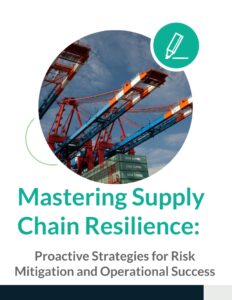Growing a business is much like steering a ship through turbulent waters. The seas can often be rough and unpredictable, presenting numerous challenges that can seem daunting. However, with the right strategies, insights, and a solid foundation of knowledge, you can navigate through these difficulties and sail smoothly toward success. In this blog post, we will dive deep into the common challenges that corporations frequently encounter during various stages of business growth, such as scaling operations, managing cash flow, and adapting to market changes. We will also offer practical, actionable solutions to help you overcome these obstacles, ensuring that your journey toward expansion not only remains on course but also becomes more rewarding. Whether you’re an established business or a new division in an established business, these strategies will empower you to take control of your strategy and achieve your goals.
Introduction to Business Growth Challenges
Business growth is a double-edged sword. On one side, it brings opportunities for increased revenue, market share, and brand recognition. On the other, it presents numerous challenges that can hinder progress if not handled properly. Understanding these challenges and implementing effective solutions is crucial for sustainable growth.
In this post, we’ll explore the specific hurdles faced by corporations in various sectors and provide actionable strategies to address them. From warehousing to contact centers and service-based to product-based businesses, we’ve got you covered.
Warehousing Woes and Winning Solutions
Increasing Storage Needs
As businesses grow, the demand for additional storage space becomes essential. An expanding inventory can swiftly exceed current warehouse capacity, resulting in disorganization and inefficiency. A cluttered warehouse not only disrupts productivity but also heightens the risk of errors in order fulfilment and increases the potential for shrinkage.
To address this issue, consider investing in automated storage and retrieval systems (AS/RS), which can maximize space utilization and enhance warehouse operations. Another effective solution is to implement a warehouse management system (WMS) that optimizes storage locations and boosts inventory accuracy. Furthermore, it’s essential to reevaluate your warehouse setup to ensure you are utilizing it to its fullest capacity and efficiency.
Labor Shortages
Finding skilled labor for warehousing can be quite challenging, particularly during peak seasons when demand surges. The competition for qualified workers intensifies, and businesses may struggle to attract and retain talent. Labor shortages not only disrupt daily operations but can also lead to significant delays in order processing, which in turn impacts customer satisfaction. When orders are delayed, customers may become frustrated, leading to negative reviews and a potential decline in repeat business. Overall, these labor challenges can adversely affect the efficiency and performance of the entire organization, making it crucial for companies to develop effective recruitment strategies and employee retention programs to navigate these busy periods successfully.
A common practice in warehousing to mitigate labor shortages during peak seasons is the employment of temporary contract workers. While this approach helps to swiftly address immediate staffing needs, it also poses challenges for individuals seeking full-time employment opportunities. To effectively leverage part-time talent, businesses can consider expanding their hours of operation to accommodate various schedules, thereby attracting a more diverse pool of applicants. Additionally, offering incentives such as flexible scheduling, performance bonuses, or opportunities for advancement can enhance worker satisfaction and retention. By creating a supportive environment that values both full-time and part-time contributions, businesses can maintain a skilled workforce ready to meet the demands of fluctuating inventory levels while simultaneously helping individuals achieve their employment aspirations.
Another effective solution is to invest in employee training programs. Developing the skills of your existing workforce can help fill the gap. Additionally, consider adopting warehouse automation technologies such as robotics and conveyor systems. These technologies can reduce reliance on manual labor and enhance operational efficiency.
Managing Supply Chain Complexity
As businesses expand, their supply chains inevitably grow more complex, often involving a multitude of suppliers, manufacturers, and logistics partners across different regions. Coordinating manually with multiple suppliers, managing lead times, and ensuring timely deliveries can be overwhelming for teams, especially as the volume of orders increases. Each supplier may have different processes, timelines, and communication styles, making it challenging to maintain a smooth flow of goods and services. Even a small disruption in the supply chain, such as a delayed shipment or a supplier issue, can create a ripple effect that impacts production schedules, customer satisfaction, and ultimately, the bottom line of the entire organization. Therefore, effective supply chain management becomes crucial for maintaining operational efficiency and meeting market demands.
To effectively mitigate these risks, it is crucial to implement a robust supply chain management (SCM) system. An SCM system not only provides real-time visibility into every aspect of the supply chain but also allows for proactive management of potential issues before they escalate. This real-time insight enables organizations to monitor inventory levels, track shipments, and assess supplier performance, ensuring that any disruptions can be addressed swiftly.
Additionally, building strong relationships with reliable suppliers is key. These partnerships foster collaboration and trust, making it easier to navigate challenges together. It’s also essential to have well-thought-out contingency plans in place. These plans should include alternative sourcing options, emergency logistics strategies, and clear communication protocols, all of which can help ensure smooth supply chain operations even in the face of unforeseen circumstances. By taking these steps, organizations can enhance their resilience and maintain operational efficiency.
Contact Center Conundrums and Crafted Solutions
Scaling Customer Support
As businesses expand, they frequently encounter the challenge of scaling their customer support operations effectively. This growth often leads to increased call volumes and a surge in service requests, which can overwhelm contact centers. The result is often long wait times, dissatisfied customers, and a strain on support staff, all of which can negatively impact a company’s reputation and customer loyalty.
To tackle these challenges, implementing cloud-based contact center solutions can provide the scalability needed to manage increased demand efficiently. These innovative solutions offer a range of advanced features, such as automatic call distribution (ACD) and interactive voice response (IVR) systems. ACD can intelligently route incoming calls to the most appropriate agents based on various criteria, such as agent expertise or availability, ensuring that customers receive prompt and relevant assistance. Meanwhile, IVR systems empower customers with self-service options, allowing them to resolve common inquiries or issues without needing to speak directly to an agent, thus freeing up valuable resources for more complex customer needs.
Moreover, cloud-based solutions offer the flexibility to scale operations up or down as needed, providing businesses with the ability to adapt quickly to fluctuations in demand. This adaptability is crucial for maintaining high levels of customer satisfaction, even during peak times. By embracing these technologies, businesses can enhance their operational efficiency, reduce customer frustration, and ultimately foster a more positive customer experience.
Utilizing BPO: What You Need to Know
Business Process Outsourcing (BPO) has become a strategic solution for organizations looking to improve operational efficiency and reduce costs. By leveraging BPO, companies can delegate specific functions like customer service, IT support, or human resources to external providers with specialized expertise. This not only streamlines processes but also allows businesses to focus on their core competencies, fostering growth and innovation.
When considering BPO, it’s crucial to assess which processes are suitable for outsourcing. Organizations should identify functions that can gain from external expertise without sacrificing service quality or customer satisfaction. Choosing the right BPO partner is essential; businesses must evaluate potential providers based on reputation, capabilities, and alignment with company values. Clear communication channels and performance metrics are vital for accountability and ensuring outsourced functions meet organizational standards.
Moreover, building a collaborative relationship with BPO partners can enhance the success of outsourcing initiatives. Implementing continuous monitoring, feedback, and adjustments is key to adapting to changing business needs. By strategically utilizing BPO, organizations can achieve operational efficiencies, drive cost savings, and improve service delivery to their customers.
Transitioning from BPO: Ensuring the Right Technology
If organizations choose to move away from Business Process Outsourcing (BPO), it is imperative to have the appropriate technology in place to support domestic agents effectively. A robust technology infrastructure should include integrated customer relationship management (CRM) systems that enable agents to access comprehensive customer information and history quickly. This access allows for personalized interactions, which can significantly enhance customer satisfaction.
In addition, companies should consider implementing self-service and automated systems. These innovations empower customers to resolve common queries independently, reducing the burden on customer support teams. Automated chatbots, for instance, can handle frequently asked questions and provide instant assistance, allowing human agents to focus on more complex issues that require nuanced responses. By investing in these technologies, businesses can maintain high service standards and operational efficiency, ultimately fostering a positive customer experience while transitioning away from BPO arrangements.
Maintaining Service Quality
Maintaining consistent service quality while scaling operations is a significant challenge. Growing contact centers may face issues such as inadequate training, high employee turnover, and inconsistent handling of customer queries.
To address this, invest in comprehensive training programs for customer support agents. Regularly monitor key performance indicators (KPIs) such as first call resolution (FCR) and customer satisfaction (CSAT) scores. Implementing quality assurance (QA) programs and providing continuous feedback to agents can help maintain service excellence.
Integrating Omnichannel Support
Modern consumers expect seamless support across multiple channels, including phone, email, chat, and social media. Integrating and managing these channels effectively can be a daunting task for growing businesses.
Utilizing an omnichannel contact center platform can streamline support operations and provide a unified view of customer interactions. This enables agents to deliver consistent and personalized support across all channels. Additionally, leveraging tools such as artificial intelligence (AI) and chatbots can enhance self-service options and improve response times.
Service-Based Business Struggles and Strategic Solutions
Managing Increased Workload
Service-based businesses often encounter significant challenges in effectively managing an increased workload as they expand. As client demands rise, project timelines tighten, and resources stretch thinner, it can quickly become overwhelming for teams. This situation not only leads to heightened stress levels and potential burnout among employees but also contributes to decreased productivity and compromised service quality.
Integrating project management software can significantly transform operations, facilitating streamlined processes and improved resource management. These tools offer an array of features, such as task tracking, real-time collaboration, and workload balancing, which are vital for effective project execution. By clearly delineating roles and responsibilities within the software, teams can enhance focus and accountability, ensuring a more efficient workflow.
Additionally, consider outsourcing non-core tasks to specialized service providers. This strategic move allows your internal resources to concentrate on what they do best, thus maintaining high standards of service delivery. It can also bring in expertise that may not be available in-house, further improving operational efficiency. By taking these steps, businesses can better navigate the complexities of growth while sustaining a healthy work environment.
Ensuring Consistent Service Delivery
Maintaining consistent service delivery becomes challenging as businesses expand their client base. Variability in service quality can lead to dissatisfied clients and damage the company’s reputation.
Developing standard operating procedures (SOPs) and best practices can ensure uniformity in service-based businesses. Regular training sessions and performance evaluations for employees can help maintain service standards. Additionally, leveraging customer feedback and implementing continuous improvement processes can enhance service quality.
Scaling Sales and Marketing Efforts
Growing service-based businesses must scale their sales and marketing efforts to effectively attract new clients and retain existing ones. However, expanding these functions in a sustainable and impactful manner can be challenging without the right strategies and tools tailored to the unique needs of the business.
One of the most significant investments a business can make is in customer relationship management (CRM) software. This technology not only helps streamline communication but also provides valuable insights into customer behavior and preferences. With this data, businesses can craft targeted marketing campaigns that speak directly to their audience’s needs and interests, increasing engagement rates and conversion opportunities. Additionally, personalized sales approaches, enabled by CRM tools, allow sales teams to connect with potential clients on a more meaningful level, fostering trust and long-term relationships.
Moreover, utilizing digital marketing channels such as social media, content marketing, and email marketing is crucial for reaching a broader audience and generating leads. Social media platforms can be leveraged to share compelling content and engage with customers in real time, while content marketing can establish the business as a thought leader in its industry. Email marketing, on the other hand, remains a powerful tool for nurturing leads and maintaining communication with existing clients through newsletters, updates, and exclusive offers. By integrating these digital strategies, service-based businesses can create a comprehensive marketing plan that not only drives growth but also builds a loyal customer base.
Product-Based Business Predicaments and Practical Solutions
Scaling Production
For product-based businesses, scaling production to meet increasing demand can be a significant challenge. Capacity constraints, supply chain disruptions, and quality control issues can hinder growth and impact customer satisfaction.
Investing in advanced manufacturing technologies such as automation and robotics can enhance production efficiency and scalability. Collaborating with reliable suppliers and maintaining buffer stock can mitigate supply chain risks. Implementing quality control processes and conducting regular inspections can ensure consistent product quality.
*Buffer stock, often known as safety stock or contingency stock, involves ordering and keeping additional inventory to safeguard against unforeseen events. This strategy aims to prevent stockouts, ensuring that a business can maintain operations even during delays in product reordering. This relates to supply chain issues of critical or hard-to-replicate items needed in order to produce your product.
Managing Inventory
Efficient inventory management is crucial for product-based businesses. Overstocking or understocking can lead to increased costs, missed sales opportunities, and customer dissatisfaction.
Implementing an inventory management system (IMS) can provide real-time visibility into inventory levels and streamline replenishment processes. Utilizing demand forecasting techniques and historical sales data can help optimize inventory levels. Additionally, adopting just-in-time (JIT) inventory practices can minimize carrying costs and reduce excess inventory.
Expanding Distribution Channels
Expanding distribution channels is essential for reaching new markets and increasing sales, as it enables businesses to diversify their customer base and reduce dependency on a single revenue stream. However, managing multiple distribution channels can be complex and challenging, often requiring careful coordination and strategic planning to ensure consistency and efficiency across all platforms.
To navigate these complexities, developing a robust distribution strategy is crucial. This involves not only identifying the most effective channels for reaching target audiences but also understanding the unique requirements and characteristics of each channel. Leveraging technology plays a significant role in streamlining channel management. Implementing an effective order management system (OMS) can centralize order processing, automate workflows, and provide real-time visibility into inventory levels across different channels, allowing businesses to respond swiftly to fluctuations in demand.
Moreover, collaborating with logistics partners and utilizing third-party fulfillment services can significantly enhance a company’s distribution capabilities. These partnerships can offer access to established networks, reduce shipping costs, and improve delivery times. Additionally, businesses should consider investing in data analytics to monitor channel performance and customer preferences, which can inform future distribution strategies and help optimize supply chain efficiency. By focusing on these aspects, companies can not only expand their distribution channels but also ensure long-term success in an increasingly competitive marketplace.
Conclusion
Business growth brings both opportunities and challenges. Understanding these challenges and implementing effective solutions is crucial for sustainable and successful growth. Whether it’s optimizing warehousing operations, scaling contact center support, managing service delivery, or expanding production and distribution, strategic approaches can help overcome these hurdles.
By leveraging technology, investing in employee training, and implementing best practices, corporations can navigate the complexities of business growth and achieve long-term success. Remember, growth is a continuous journey and staying agile and adaptable is key to thriving in today’s dynamic business environment.
For more personalized guidance on overcoming business growth challenges, consider consulting with industry experts or leveraging specialized software solutions tailored to your specific needs.







